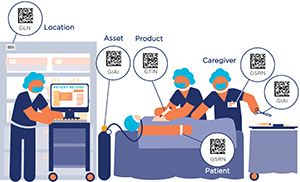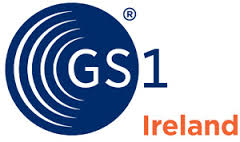Increasing patient safety
Practical use of barcode standards for patient safety and activity based costing in operating theatres.

Risks to patient safety occur when there is a mismatch between a patient and the care they receive. Errors can occur at time of diagnosis, treatment or on-going care. When looking at how technology can improve patient safety, we don’t need to look very far. The retail sector has demonstrated the value of adopting GS1 standard barcoding, which has reshaped these industries and created billions of dollars in value.
McKinsey & Co research states: “The potential impact enabled by global standards goes well beyond the use cases that we can identify and quantify today. For example, with global standards in place, payors, regulators and epidemiologists could learn more about the effectiveness of drugs, medical devices and treatments, improving health and yielding savings at the institutional and even national level.” (Strength in unity: The promise of global standards in healthcare, October 2012).
Derby Teaching Hospitals NHS Foundation Trust is leading the way in this area. They have developed an in-theatre usage and procedure level costing system using GS1 barcodes to capture the patient, staff, instrument trays, scopes, products, consumables and the time used in an operation, leading to a significant reduction of the volume of stock held and the ability to have accurate cost data. They have barcodes for the procedures (OPCS/HIPE codes) as well as barcodes to track co-morbidities. This enables the capture, at the point of use, of every single detail of the procedure through the use of compliant barcodes.
Speaking about GS1 standards and how they transform the procurement, inventory management and supply chain efficiency of the health care industry, Kevin Downs, Director of Finance and Performance at Derby Teaching Hospitals NHS Foundation Trust said: “Having worked in the retail industry, I understand the value of GS1 standards and how they can improve patient safety, and reduce costs at the same time, whilst providing real management information to address clinical variation.”
When recalls take place, the Trust can now easily identify all products that are held within the Trust, thus preventing their use. This process of scanning everything in the theatre also has additional benefits. Clinical staff are able to spend more time with patients. The rich data available facilitates ‘fact based discussions’ with clinicians and staff. Procedures are being coded more accurately and consistently so money is not lost due to missing procedure codes.
New regulations on traceability of medical devices and pharmaceuticals in the EU, the US and elsewhere are driving a harmonised standard for identification in healthcare. Using global standards facilitates widespread interoperability among healthcare software applications and technologies. The barcode scan of a unique identifier is becoming the key to access information in the clinical system about a patient, product or service. In recognition of this the NHS eProcurement strategy has mandated that every product procured by an NHS Trust has to be identified with GS1 standards
In Ireland, the HSE Procurement team is following these developments and the benefits of unique identification are recognised. “The adoption of GS1 coding standards is viewed as a very important priority to ensure best practices and safety for patients.” Says the HSE’s Head of Procurement John Swords. A recent audit of the National Distribution Centre indicated that 80 per cent of the products have a GS1 unique identifier (barcode) and work is ongoing to put the foundations in place to enable the implementation of processes such as scanning in theatres.
Siobhain Duggan
Director of Innovation and Healthcare
GS1 Ireland

Tel: +353 1 208 0660
Web: www.gs1ie.org/healthcare





